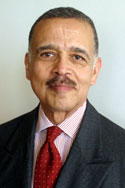ARCHIVES
OF EDITORIALS
July 21, 2005
To serve and protect?
Citizens of Roxbury, Dorchester and Mattapan find
themselves in quite a quandary. They suffer from the consequences
of crime in their community and would like to organize to combat
it. However, they feel handcuffed. Their efforts will be of no
avail unless the people have confidence in the fidelity of the
police.
The Banner receives numerous reports of alleged police brutality.
It would be impractical to investigate them all. However, the
Banner tries to investigate those that seem especially egregious.
The issue of July 14 contained an account of police response to
a shooting at a fourth of July party in Dorchester. According
to witnesses, the police assaulted young girls who were near the
crime scene. One must wonder what would provoke young girls who
were not involved in the shooting incident to attack armed police
officers.
Police accounts of the event differed substantially from those
of eyewitnesses. What was most disturbing of all is that a number
of witnesses were reluctant to be identified or photographed because
they feared police retaliation. It is unacceptable to find that
citizens are in fear of the police who are committed “to
serve and protect”.
When an incident of police brutality occurs, then citizens who
would otherwise be fighting crime have to focus their efforts
on that grievance. And what is worse, the confidence of the people
in the police is eroded, so it becomes more difficult to mobilize
community cooperation.
In addition to the problem with the police, involved citizens
have to deliver the youthful miscreants to a criminal justice
system which is by no means racially neutral. A study in the Dorchester
District Court, which was published by Commonwealth Magazine in
2005 found that nonwhite defendants faced far more serious charges
than whites accused of the same drug offenses. This was true even
though 58 percent of the blacks and Latinos were first time offenders
and only 14 percent of the whites were.
The police are the first contact with the criminal justice system.
As difficult as it may be, it is crucial that the conduct of the
police be so courteous and professional that the police earn the
confidence of the community.
An objective standard
Ever since the school busing conflicts of the 1970s,
Boston has been branded as the nation’s most racist city.
The dramatic media coverage of the conflicts helped to establish
this reputation. There were no objective criteria.
Now Bruce Dixon of The Black Commentator has established a standard
to determine the “Ten Worst Places to be Black.” The
test is the percentage of the black population in jail. Wisconsin
topped the list followed by Iowa, Texas, Oklahoma, Arizona, Delaware,
Nevada, Oregon, California and Colorado. Since most blacks in
Wisconsin live in Milwaukee, that city would be the most inhospitable
to blacks.
A companion test is those states with the highest disparity between
the incarceration rates of blacks and whites. Topping this list
is New Jersey at 13.15 to one, followed by Connecticut, Minnesota,
Pennsylvania and New York. Wisconsin and Iowa are also included
with disparity rates between 11 and 12.
While southern states lock up greater numbers of blacks because
of their much larger black populations, it is interesting to note
that they also imprison large numbers of whites so the disparity
rate is relatively low. The disparity rate for Mississippi is
4.12 compared to 9.47 for New York and 12.77 for Connecticut.
Half of the nation’s 2.2 million prisoners are black. Excessive
use of the criminal justice system to resolve problems of poverty
and inadequate education has been damaging to black communities.
Fortunately, Massachusetts was not on Dixon’s list. But
Boston is not yet the exemplar of successful racial diversity.
It will take considerably more work and commitment to make it
so.
Home
Page

